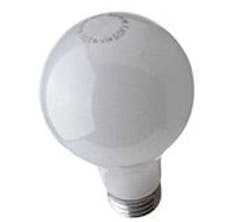The Big EISA
The Energy Independence and Security Act of 2007 (EISA) kicked in on Dec. 19, 2010. If you've not been keeping up, you might be surprised that the motor you've been faithfully buying for years is no longer available.
Very little of EISA applies to electric motors, but the part that does tells builders of pretty much every general-purpose, three-phase ac industrial motor from 1 hp to, in most cases, 500 hp to move up to NEMA premium-efficiency standards, if they haven't already.
You still can buy EPAct efficiency-rated motors if they were on the suppliers' shelves before Dec. 19, and the legislation doesn't apply to fractional hp motors or 48 or 56 frames. Neither does it compel users to replace older motors that are still in service, nor does it prohibit repairing them and returning them to service.
That's the tricky bit in just how much impact higher-efficiency motors can make. Premium-efficiency motors look to be about 15-20% more expensive than their predecessors. Some of your machine customers might be tempted to think that using maintenance expense money to rewind—rather than compete for scarce capital dollars to buy new—is a good idea.
It's not a good idea. Several estimates put the annual energy savings from buying a premium-efficiency 20-25 hp motor, rather than repairing/rewinding a standard-efficiency motor, at between $400 and $500 with a payback of 16-18 months at current energy cost levels. And there's a mountain of data to show that energy consumption represents 90% of a motor's total lifecycle operating costs. The math is pretty clear-cut.
But we've all seen it. Motors can go 5+ years between repairs and can be rewound as many as five times. And like it or not, local factory management often is pressured, more than is wise, to control capital spending, particularly when revenues are down.
Reducing energy consumption is an industrial imperative that needs maximum visibility. Think about that when you're explaining to customers new and old why the motors cost more. You can show them how their total cost of ownership will go down significantly, and that you as the builder can't just eat those increases, nor should you.
While you're at it, maybe it's a good time to talk with those customers about the older machines on their factory floor. Even if they invest in new motors, there probably are lots of inefficiencies in the machine's entire power train, from gear reducers to belt-driven speed controls, that are gorging on far more energy than they need to.
We've heard from many of you about how much more they're relying on you lately, as their own in-house expertise keeps getting leaner and, regrettably, less-capable. Make the most of a highly valuable opportunity to cement a long-term partnership around helping them improve their productivity.


